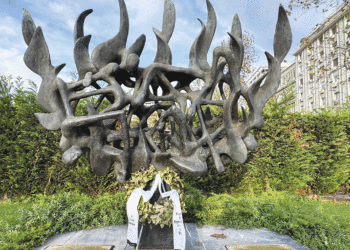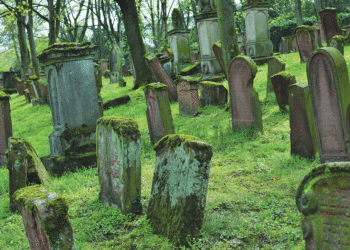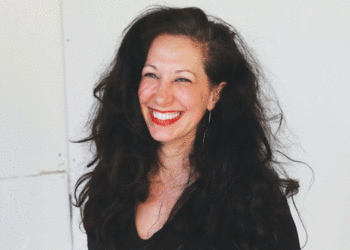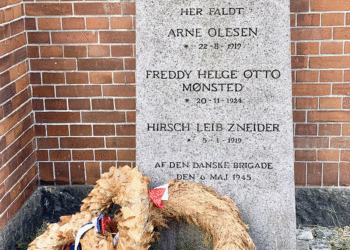By ERIN ELLIOTT BRYAN / Community News Editor
In 1921, Lithuanian immigrant Max J. Kaplan was a successful produce supplier in Minneapolis, delivering fresh fruits and vegetables from local farms to local grocery stores. He enlisted the services of architects Tyrie and Chapman to build a grand home for his family — his wife and three children — at 1045 Washburn Ave. N., in the Homewood neighborhood on the Jewish North Side.
The more than 8,000-square-foot home featured a music room, library, basement “amusement room,” maid’s quarters, a butler’s pantry, balconies, ornate fireplace carvings, a wine cellar, two-car tuck-under garage, a backyard fountain and even a secret cabinet to store liquor during Prohibition. It was situated on 1.07 acres.
“She had the happiest memories of sledding and sliding and tobogganing down Theodore Wirth Park, which backs up to the house,” Ann Phillips said of her mother, Ruth, the oldest of the Kaplan children. “It was a very happy house for many years… What I knew I knew from my mother because she was so happy there and would talk about it, the parties and gatherings.”
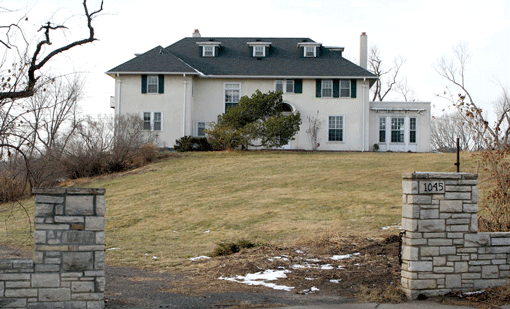
As the Depression loomed, farmers were hit hard and the Kaplans were forced to leave their house in 1928, moving to their home on Lake Minnetonka. Ruth Kaplan married in 1930 and never saw the Washburn home again.
The home’s history during the next 10 years is a little fuzzy, though it was rented at various times. Maxim and Jeannette Kunin purchased the property in 1938, and remodeled the basement in 1944. After Jeannette’s death, son Robert and his wife, Julie, lived in the house; Robert Kunin died in 2011.
Architect Alissa Pier, a graduate of the University of Minnesota, has lived on the North Side since 1998. Her husband’s parents moved to the North Side in 1995, and her husband’s first home was a 1926 double bungalow on Bryant Avenue North.
When Pier and her husband got married, they moved to another home on the North Side, which they renovated with respect to the original details.
“I love North,” Pier told the AJW. “North’s awesome.”
And when Pier first saw the house at 1045 Washburn Ave. N., it immediately moved to the top of her personal list of dream homes.
“I’ve loved it for years, before it was even a thought on my mind that it actually would ever be for sale,” Pier said. “I had driven by — my sister still remembers, she was in the car with me — and I said, ‘Someday, I want to have a house just like that.’”
When a tornado struck North Minneapolis in 2011, the house was heavily damaged. Its roof was ripped off and 37 full-grown trees on the property were destroyed.
In the aftermath of the storm, Pier had arranged for local architects, landscape architects and interior designers to provide more than $50,000 worth of free design assistance to ensure that the character of the North Side homes were kept intact during repairs.
She patiently waited for a call from 1045 Washburn, which never came.
Sometime later, Pier noticed estate sale signs out front. Though the house was not officially for sale, it was an opportunity for Pier to see the inside of the home — and she could tell it would be a lot of work.
She wrote a letter to owner Julie Kunin, asking to be kept in mind if and when she ever decided to sell. Two months later, Pier got a call from a realtor telling her to put together her best offer.
“Apparently, [Julie Kunin] got over two dozen letters from people requesting that she contact them and we had to beat out a half dozen other offers.” Pier said. “What do you offer on your dream?”
Once they had purchased the house, in the summer of 2012, Pier was able to locate the original plans from Tyrie and Chapman, as well as the 90-page spec manual. She also found the 1944 basement remodel plans from Liebenberg and Kaplan in the home’s coal room.
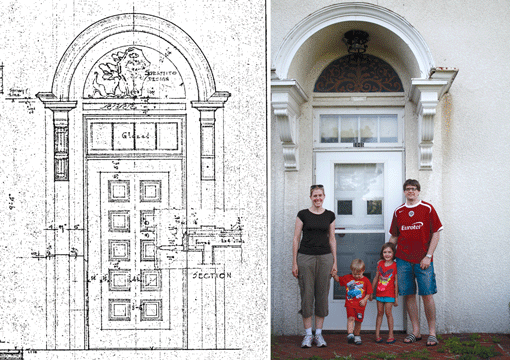
(Liebenberg and Kaplan, the firm that designed Temple Israel in 1928, was most well known for designing more than 200 movie theaters throughout the Midwest, often incorporating an acoustical tile called Celotex to accommodate amplified sound. A mural in the basement of the Washburn home uses a Celotex treatment in two murals: one of the Kunin family and one of the two Kunin brothers who fought in World War II. It is believed to be the only residential application of that technique.)
Once Pier had located the plans, she set out to research those who had lived in the home, as she is considered only the third owner. Among others, she connected with Phillips, who finally had the opportunity to see her mother’s home for the first time.
“I feel like they’re house family,” Pier said. “There is such positive energy in this house. It just feels like someone cared about it, so you want to know who cared about it and the lives of the people who lived there.”
Pier is continuing to restore the home, based on the original plans, and hopes to have several more projects completed by the time it is featured as part of the Minneapolis-St. Paul Home Tour on April 26 and 27.
“I said I’d only do it if it would promote North as a great place for home ownership. There are a lot of cool homes that just need good owners,” Pier said. “And I also said it needs to be something that promotes preservation… There’s just such history there. Everyone remembers North being this awesome place, but nobody seems to have faith in it now. But it can get back.”
“You can restore faith,” Phillips added.
Just two blocks east of Pier’s home is 1111 Upton Ave. N., owned by David Jordan Harris, executive director of Rimon: The Minnesota Jewish Arts Council, and his partner, Ward Bauman. Harris and Bauman purchased the home in 2009 after it had been extensively renovated by the Greater Metropolitan Housing Corporation (GMHC).
Harris and Bauman are considered the fourth owners of the home and the third Jewish owners.
“Apparently the house was a wreck when GMHC bought it,” Harris said of the house, which was built in 1923. “They did a fantastic job replacing the roof, the electrical, the plumbing. Everything that you would want new is new, and everything that you would want old is old.”
Like Pier, GMHC worked from the original plans to keep the charm and character of the 2,100-square-foot home as it was initially intended.
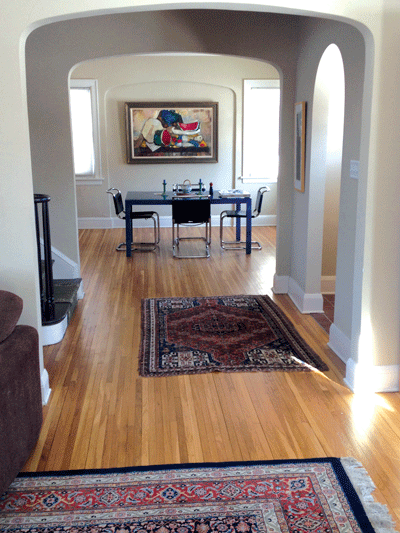
“It was the house, specifically, that drew me, and the interesting thing is that it was in a part of the North Side that I didn’t know at all,” Harris said. “The fact that the house was rehabbed created a lot of interest and curiosity in the neighborhood…. It’s been a real platform for storytelling, which I love. It’s a real neighborhood, and you have a sense that you are in a neighborhood that has a history. You know it when you drive into it.”
In 2011, just weeks after the tornado, Rimon and the Jewish Historical Society of the Upper Midwest (JHSUM) co-sponsored a two-week festival titled “The Northside Today: Memory, Place, Home, Community” (6-10-11 AJW). And Harris opened his home as one of the venues.
“Many people wanted to see the house and then said, ‘Oh, yes, I had relatives who used to live across the street.’ I think it was wonderful for the Jewish community,” Harris said. “I feel honored to be part of that story, which is, at this point, a nearly 100-year-old story of Minneapolis’ Jewish community… I didn’t grow up in Minnesota, so I don’t have any of those memories, but I’ve lived here long enough to know what they mean to other people.”
Harris also appreciates the burgeoning arts scene that is taking shape on the North Side.
“As a Jewish man and a Jewish artist, it’s a pleasure for me to bring my culture and my background in the work that I do into the mix of what’s going on in the North Side today,” Harris said. “I like to think that the Jewish story is not over on the North Side.”
And while Harris allows that the extensive damage from the tornado changed the look of the neighborhood, it was also a great example of the sense of community that still exists on the North Side.
“It became an opportunity for people to reach out to each other,” Harris said. “It’s been fun to watch the neighborhood repair itself. You feel that you’re part of a vital organism that was struck a blow and responded. That’s not something that I would recommend to people, being in a tornado, but it was an interesting experience and it becomes part of the history of the house and the history of the neighborhood.”
(American Jewish World, 2.14.14)










